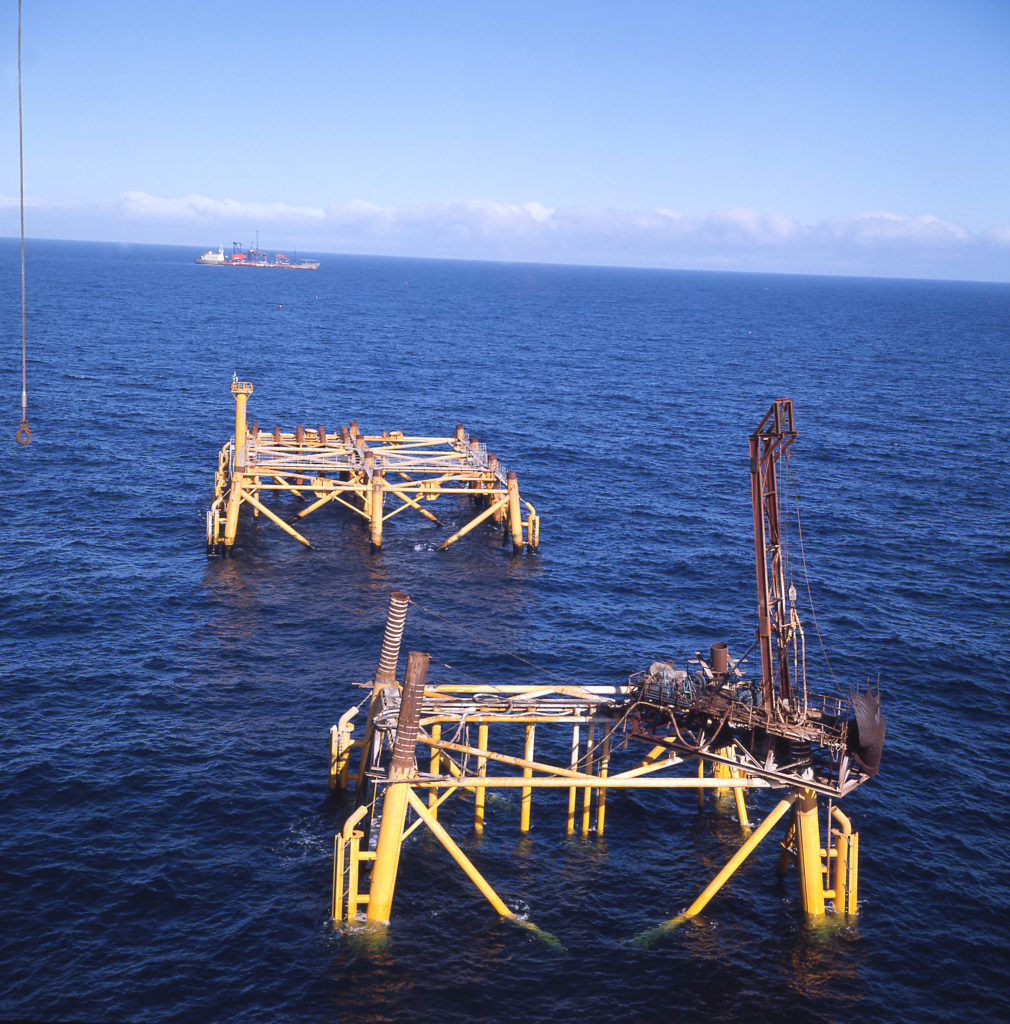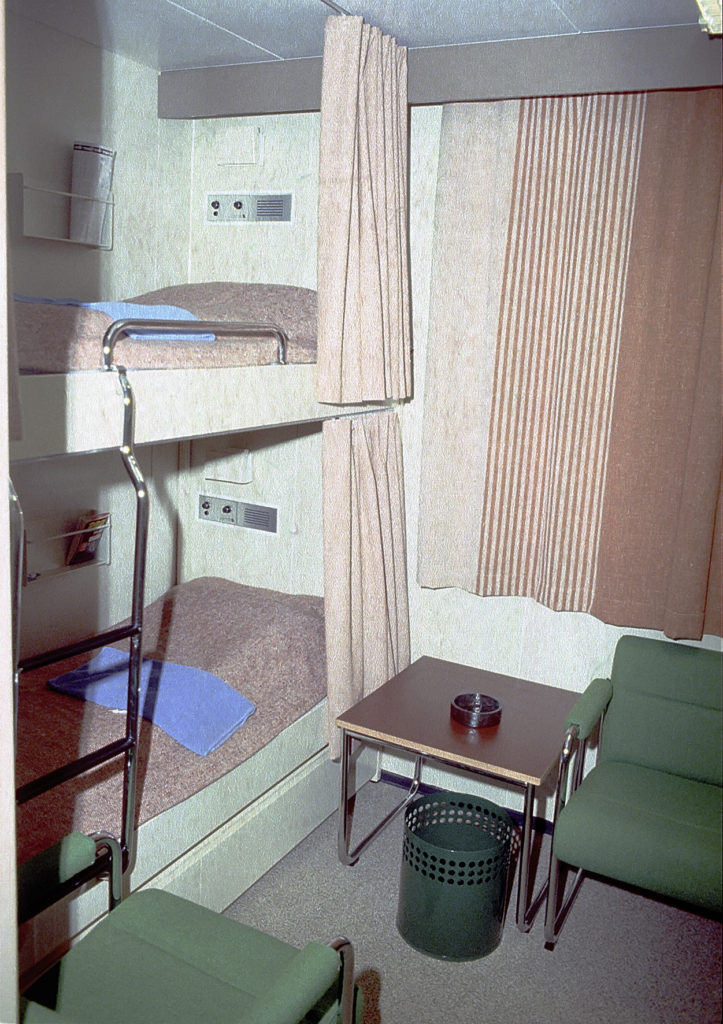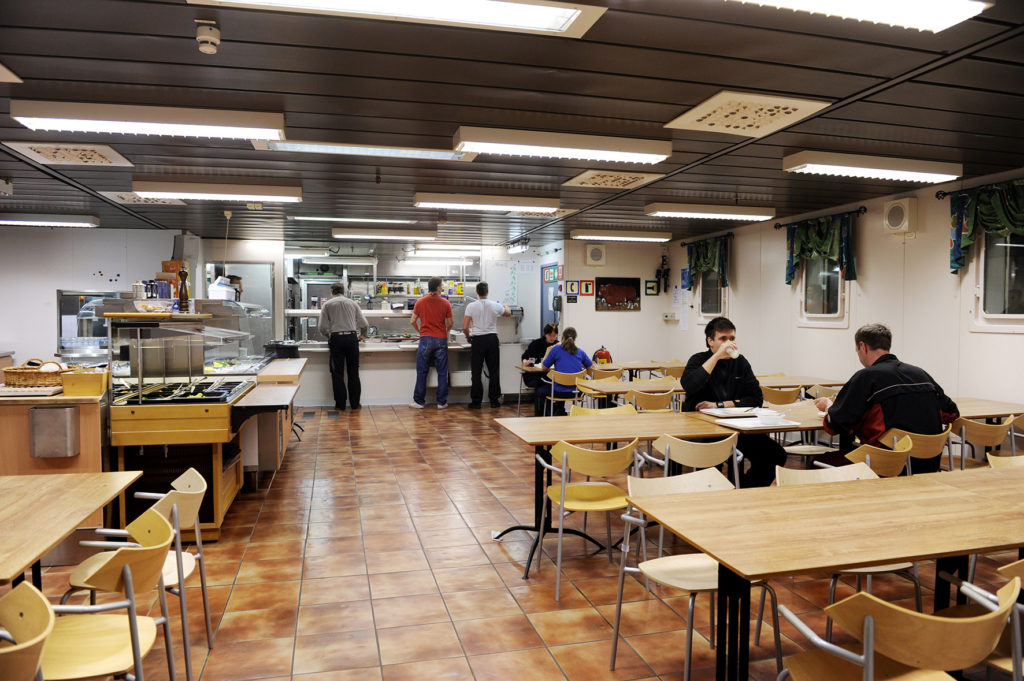Ekofisk 2/4 Q
- Installed 1972, operational 1973
- Part of the Ekofisk Complex
- Ceased to function as an accommodation platform in March 2014, with removal due to be completed by 2020
- Also known as Ekofisk Quarters

 stålunderstell, 1970, pæling, ekofisk 2/4,
stålunderstell, 1970, pæling, ekofisk 2/4,Ekofisk 2/4 Q was installed in March 1972. The jacket and accommodation module were produced by Heerema/UIE in St Wandrille, France, while the module support frame (MSF) came from Heerema/IHC Gusto Staalbouw in the Netherlands.
The jacket (support structure) was installed in the correct place between 2/4 FTP and 2/4 C on 10 March, and a temporary deck installed in anticipation of piling.
A week after the permanent MSF was installed on 9 June, the platform was connected to 2/4 FTP by a bridge. A temporary accommodation module was also installed because the permanent structure had been slightly damaged by a fire during insulation work at the construction site.
This was finally positioned on 22 June, and the first residents moved in during 1973. Up to 12 people could occupy the same cabin, and took it in turns to sleep there. However, Norwegian regulations issued in 1978 specified that no more than two people could share a cabin offshore.
 Ekofisk 2/4 Q
Ekofisk 2/4 QThe accommodation module was replaced in 1981 with a structure fabricated by Leirvik Sveis at Stord south of Bergen.
Operation of 2/4 Q ceased in March 2014. Two accommodation modules were removed in July 2014 by Heerema Marine Contractors and taken to Vats north of Stavanger for scraping. The jacket and bridges to 2/4 C and 2/4 FTP are due to be removed by 2020.
A total of 60 double cabins were provided on the fourth and third stories – 14 in the northern section and 16 on the southern side. The cabins in each section had their own corridor and connection to the other stories by external stairs at each end and an internal staircase in the middle. Each cabin had a WC/shower.
The northern section also contained two storerooms, a phone room and an electrical/mechanical room. A storeroom and electrical/mechanical room were provided on the southern side.
Offices predominated on both sides on the second storey. Two storerooms stood between the sections, while each section had an electrical/mechanical room. A non-smoking lounge and a laundry were provided in the south-eastern corner. The north-western corner accommodated a gym with shower and sauna as well as lounges for smokers and non-smokers.
 Ekofisk 2/4 Q
Ekofisk 2/4 QThe first storey contained three changing rooms with WC and shower at the south-western and north-eastern corners. The galley with walk-in freezer and storeroom as well as the dining room were in the northern section. In addition to a changing room/WC, the southern side contained separate lounges for smokers and non-smokers, telephone and cinema.
